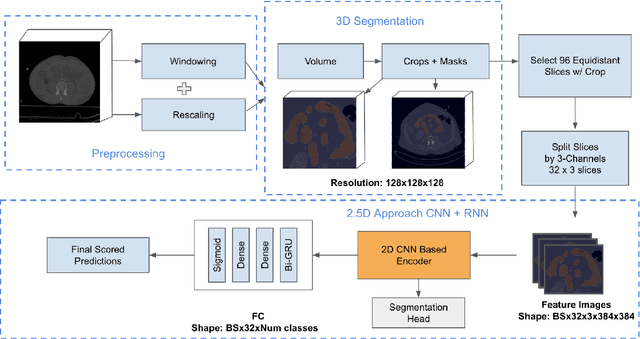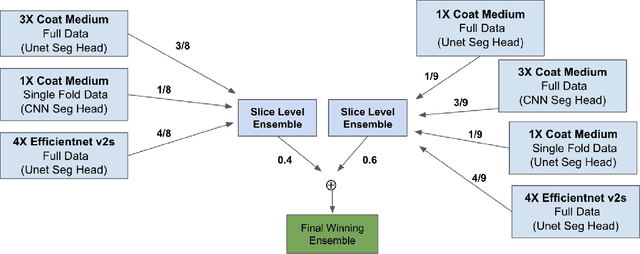Liheng Jiang
Advanced AI Framework for Enhanced Detection and Assessment of Abdominal Trauma: Integrating 3D Segmentation with 2D CNN and RNN Models
Jul 23, 2024



Abstract:Trauma is a significant cause of mortality and disability, particularly among individuals under forty. Traditional diagnostic methods for traumatic injuries, such as X-rays, CT scans, and MRI, are often time-consuming and dependent on medical expertise, which can delay critical interventions. This study explores the application of artificial intelligence (AI) and machine learning (ML) to improve the speed and accuracy of abdominal trauma diagnosis. We developed an advanced AI-based model combining 3D segmentation, 2D Convolutional Neural Networks (CNN), and Recurrent Neural Networks (RNN) to enhance diagnostic performance. Our model processes abdominal CT scans to provide real-time, precise assessments, thereby improving clinical decision-making and patient outcomes. Comprehensive experiments demonstrated that our approach significantly outperforms traditional diagnostic methods, as evidenced by rigorous evaluation metrics. This research sets a new benchmark for automated trauma detection, leveraging the strengths of AI and ML to revolutionize trauma care.
Image anomaly detection and prediction scheme based on SSA optimized ResNet50-BiGRU model
Jun 20, 2024Abstract:Image anomaly detection is a popular research direction, with many methods emerging in recent years due to rapid advancements in computing. The use of artificial intelligence for image anomaly detection has been widely studied. By analyzing images of athlete posture and movement, it is possible to predict injury status and suggest necessary adjustments. Most existing methods rely on convolutional networks to extract information from irrelevant pixel data, limiting model accuracy. This paper introduces a network combining Residual Network (ResNet) and Bidirectional Gated Recurrent Unit (BiGRU), which can predict potential injury types and provide early warnings by analyzing changes in muscle and bone poses from video images. To address the high complexity of this network, the Sparrow search algorithm was used for optimization. Experiments conducted on four datasets demonstrated that our model has the smallest error in image anomaly detection compared to other models, showing strong adaptability. This provides a new approach for anomaly detection and predictive analysis in images, contributing to the sustainable development of human health and performance.
 Add to Chrome
Add to Chrome Add to Firefox
Add to Firefox Add to Edge
Add to Edge